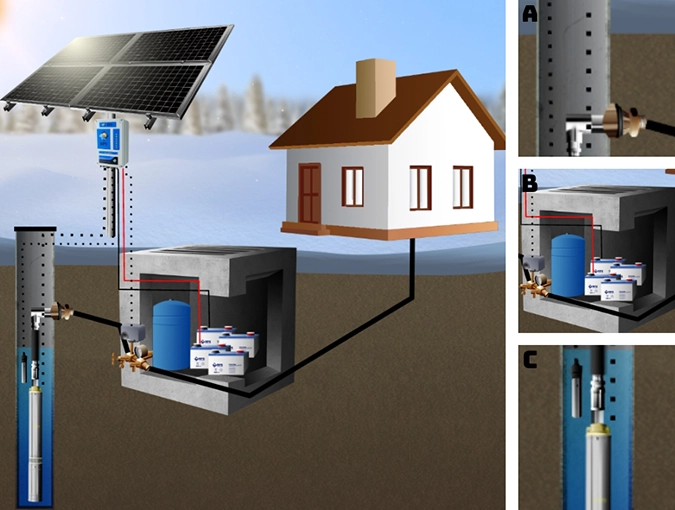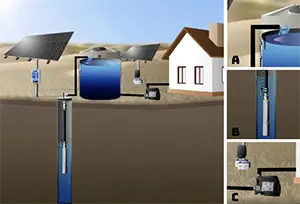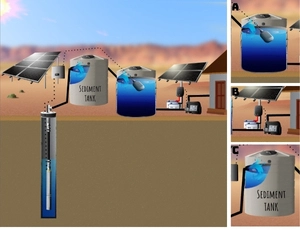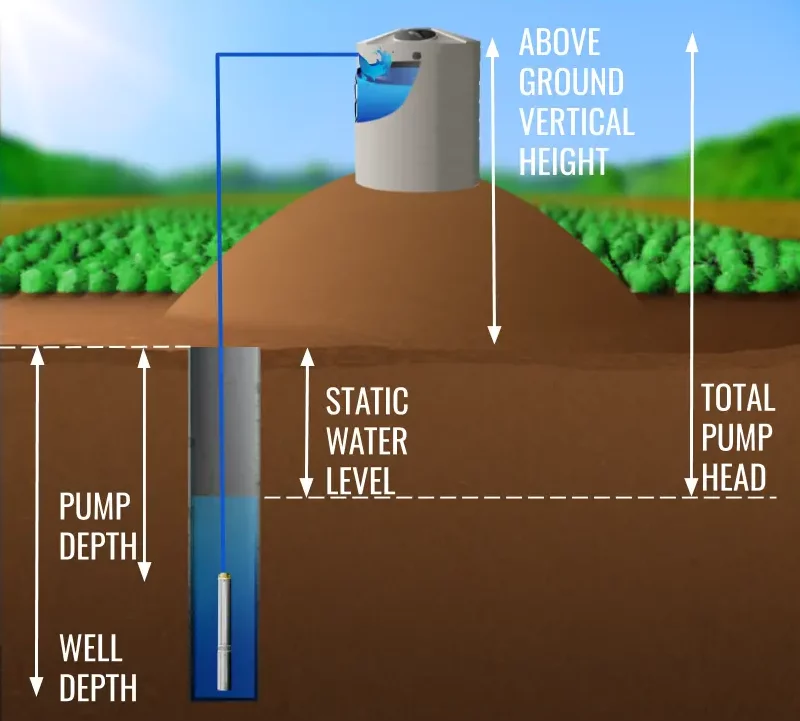Pressurized Water System for Cold Climate Household

Submersible pumps can’t provide 45 -60 psi for a household by themselves, they require the help of a pressure tank for reliable, consistent higher pressure. An RPS 200, RPS 400, RPS 600, RPS 800 or RPS 400N could be used in this setup as they are all compatible with batteries (B), which you’ll need for off hour or nighttime pumping. Without batteries, the submersible pump would only operate from sun up to sun down. After sun down you would only have what’s available in the pressure tank, which some rare customers opt for because their water needs are extremely minimal. We recommend splurging on a larger capacity pressure tank rather than smaller for off grid set up, it provides some extra storage and minimizes pump cycling. Two pieces of special plumbing are needed to make a submersible pump to pressure tank system work; a check valve and a reverse action pressure switch. The check valve screwed directly on to the put outlet (C), a one way valve that stops water from draining back through the pump, helps maintain pressure in the pipeline. The reverse action pressure switch (B) senses changes in pipeline pressure, if the pressure tank is draining and therefore asking for more water, or filled up. The reverse action pressure switch is wired into the charge controller and will send a sensor pulse to either turn on the pump (if the pressure tank is asking for water) or turn the pump off (if the pressure tank is full). Reverse action pressure switches are adjustable to a variety of settings like 40/60 , 30/50 or 20/40, we sell there here. Watch our video about adjusting a reverse action pressure switch here. If the water were allowed to drain back through the pump (which is sometimes useful in freeze proofing a system) then the reverse action pressure switch would be unable to sense the changes in line pressure. And if you’re worried about the pump turning on/off multiple times during the day – don’t be! Our submersible pumps are all soft start/ slow stop, meaning no grinding parts or start up torque.
In areas susceptible to freezing, pipes are buried below the frost line using a pitless adapter (A). A pitless adapter is a plumbing attachment drilled through the side of a well casing, and a well cap seals up the top of the well from debris. Included well low sensor (C) turns off the pump to protect the motor from running dry.



